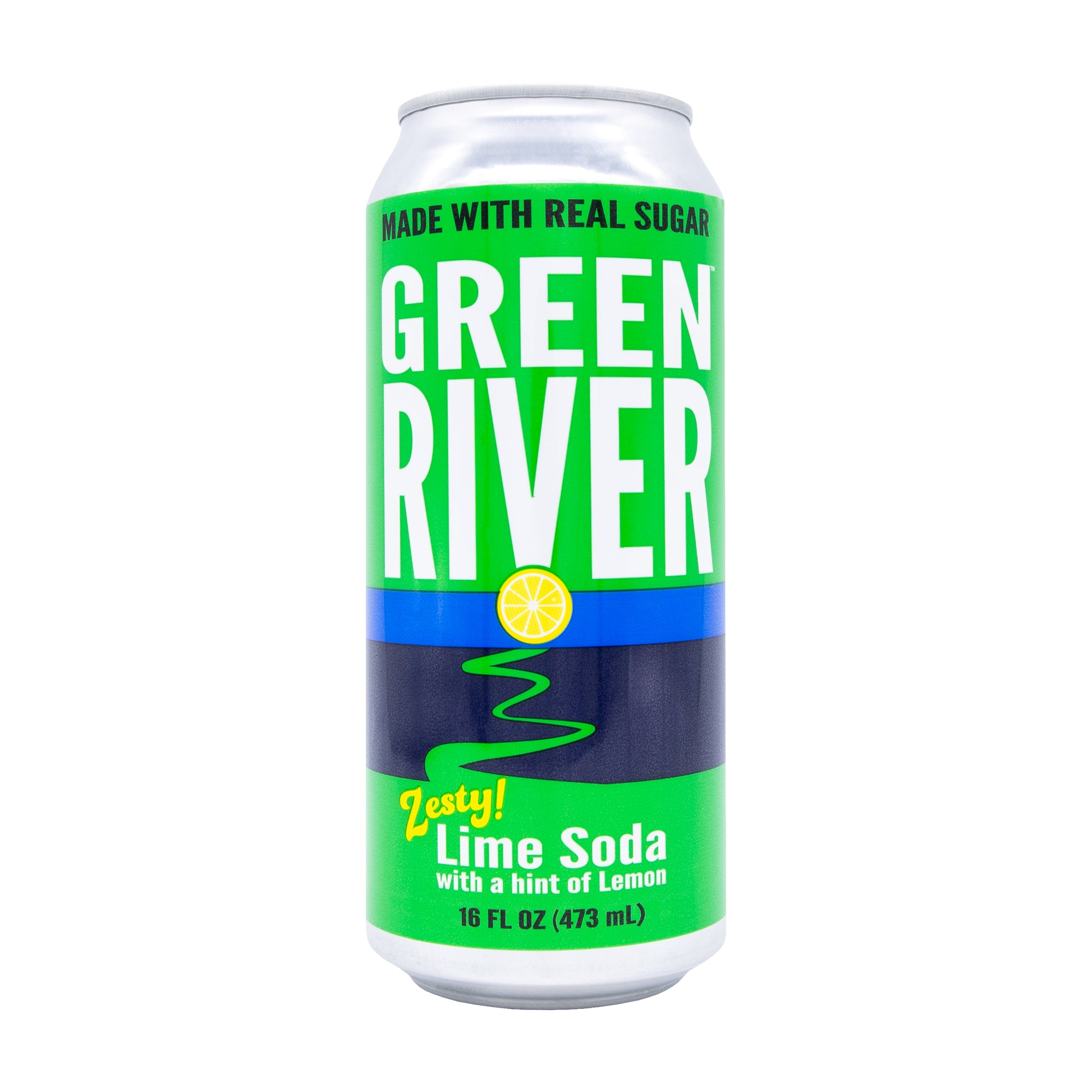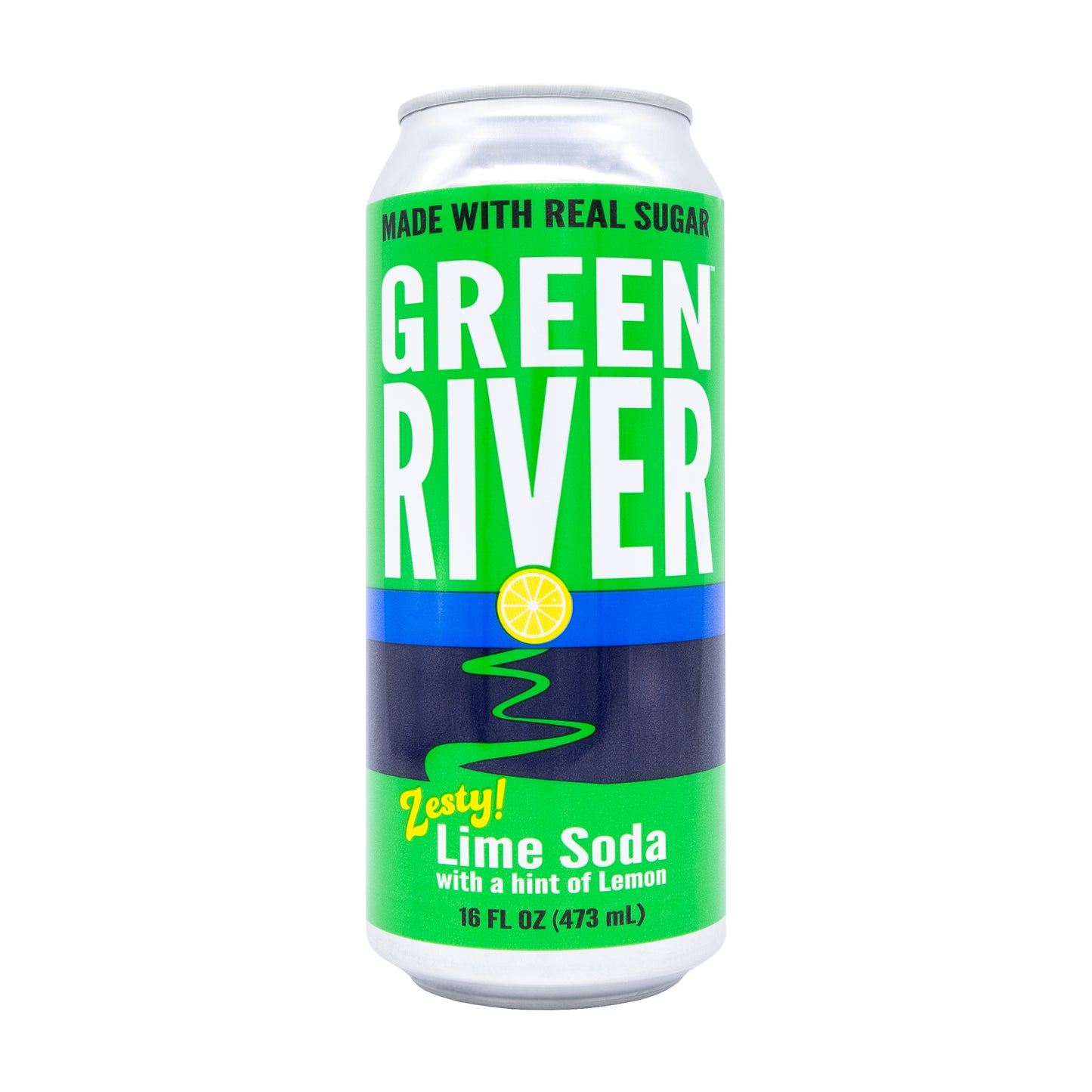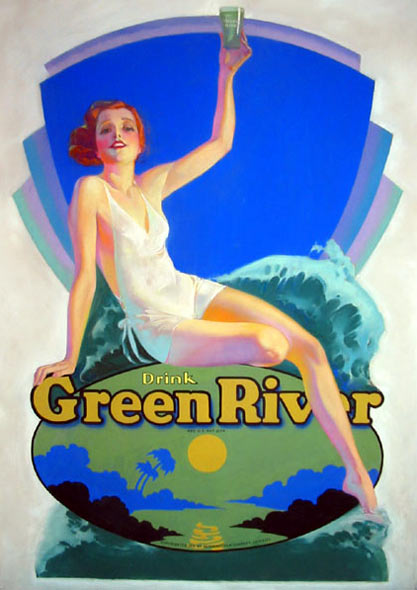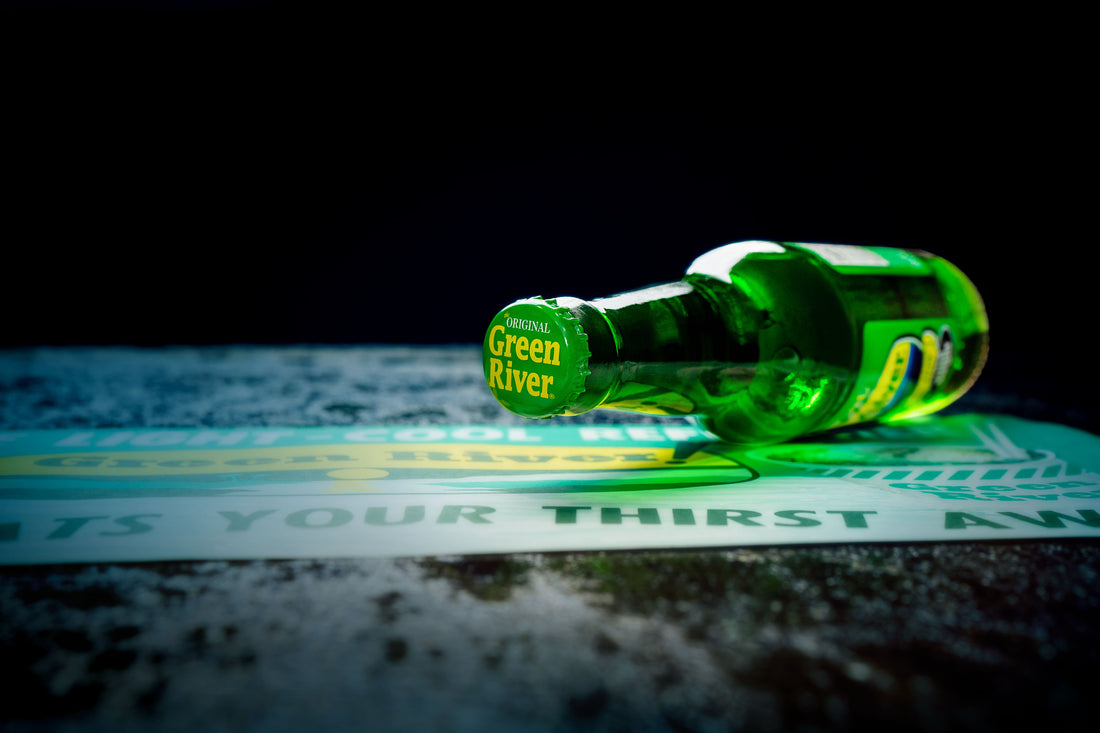It's a little known fact in the United States that green soda doesn't actually taste like lime.
Green soda really tastes like a plant known to some as waldmeister, and to others as woodruff. Woodruff is a shrubby green plant with a flavor that some call floral, and others call soapy, but most agree that it makes a great soda. It's also good for flavoring sweets, wines, and liqueurs.

A patch of flowering waldmeister
At least, that's what Germans tend to think.
According to cultural commentator J.J. McCullough, in other parts of Europe, green soda tastes like apples or pears. In Japan and some other regions of Asia, green sodas and candies taste like Green Tea or Guava.
Okay, confess I misled you a little. It is true that the U.S. and Latin America are the heartland of lime flavored soda. In the United States, green sodas like Green River are typically lime flavored.
What may surprise Americans (and I mean North and South Americans), is that lime flavored sodas and sweets are considered exotic or unusual in much of the wider world.
So, how come Americans overwhelmingly drink lime soda instead of green apple soda, pear soda, guava soda, or waldmeister soda? To answer that question, it's worth asking how limes even got to the Americas.
How the Lime got to the Americas
According to the Encyclopedia Britannica, limes probably first grew somewhere in the Indonesian archipelago or the nearby southeast Asian mainland. Given that Indonesia is made up of some 17,500 islands that loosely border a huge part of Asia, that makes the exact origin of the plant rather hard to pin down.

Limes on a tree via Wikimedia Commons
From this broad region, limes made it to India, where they rode along with Arab traders into Africa and the eastern Mediterranean. European crusaders brought limes back from their 12th and 13th century misadventures, and the lime tree became established in the western Mediterranean.
So, limes had been growing in the western Mediterranean for at least 250 years by the time Christopher Columbus was born in 1451 in Genoa, Italy. After sailing the ocean blue in 1492, Columbus arrived in the West Indies and thought it would be a neat place to plant some limes. When Chris sailed the ocean blue again in 1493, he brought lime seeds with him.
Lime trees grow great in the Caribbean, and soon the trees found their way to Mexico and Florida as well.
However, limes didn't get their big break in the Americas until a single-minded Scotsman named James Lind figured out that the lime wasn't just a sour fruit--it was also a weapon of war.
Dr. James Lind, or How I Learned to Stop Worrying and Love the Lime
Scurvy is a horrifying disease. The Cleveland Clinic says that scurvy begins with irritability, weakness, fatigue, and joint pain. Then, the symptoms progress into rough and scaly skin, anemia, bruising, dry and brittle hair, and swollen legs. From there, it only gets worse.

An 1841 diagram showing the bruising and internal bleeding caused by untreated scurvy via Wikimedia Commons
In the late stages of scurvy, the patient's gums swell and bleed, and may become purple and spongy, causing their teeth to loosen and fall out. Then, bleeding sores open up all over their body and do not heal. The inevitable result of untreated scurvy is a bloody and painful death.
This death was a shockingly common one for the sailors of the world, killing upwards of two million of them during the early modern period, according to this article published in the U.S. Naval Institute's Naval History Magazine.
We now know that eating just 75-90mg of Vitamin C each day--the amount found in roughly four limes--generally prevents scurvy. Unfortunately, vitamins were not yet known to science in those days.
Scurvy troubled the great military minds of the world's naval empires, and Britain was chief among the concerned. Sick sailors could not fight, and that was bad for the empire. Fortunately for millions of British sailors, Royal Navy Surgeon James Lind made it his life's work to find a cure.

A 1783 Portrait of Dr. James Lind via Wikimedia Commons
While many were working to find the cure, James Lind was uniquely meticulous. As his colleagues wasted their time using hack science, Lind conducted what was possibly the world's first randomized clinical trial.
Lind took a small group of scurvy-afflicted sailors and divided them into six pairs, giving each pair a different treatment--cider, dilute sulfuric acid, vinegar, seawater, plant paste, and citrus fruit. Only the citrus-fed sailors recovered, and so Lind found his cure.
Once the Royal Navy came around to Lind's idea, they had to figure out how to source and preserve enough citrus juice to keep the entire British navy scurvy-free. They first found success preserving lemon juice by mixing it with alcohol. This worked for a time, but when the rival Spanish empire cut off their supply of lemons, the British Navy turned to Caribbean limes.
Limes were planted en masse in British colonial holdings in the Americas to supply the navy. With a large supply of boozy lime juice at hand, the British could leave ships at sea for years without losing sailors to scurvy, while their opponents were afflicted in a matter of months.
This won battles for the British, and made lime-growing both a big business and a matter of national security for what was one of the world's most powerful empires.
How the Lime Became America's Sweetheart
The British Navy's insatiable need for limes cemented the place of the lime in the subtropical regions of the Americas. The British Navy also pioneered the method of preserving citrus juice in alcohol, which dovetailed into the creation of lime-flavored cocktails like the gin and tonic.

The British Navy preserved lime juice in alcohol, leading to the invention of cocktails like the Gin and Tonic via Wikimedia Commons
Although the lime was exotic and expensive in Europe and parts of Asia, the proliferation of limes in the Americas meant limes were relatively cheap in the United States, especially in the Southwest. This was because United Statesians didn't even have to go as far as the Caribbean to get their fix. As it turns out, Mexico is possibly the best place in the world to grow limes.
Molly Watson of The Spruce Eats notes that Mexico is home to most of the world's commercially grown lime trees. Although many of those limes are exported, Mexico also consumes more limes than any other country in the world.
Parts of the United States that used to be part of Mexico--including California, Arizona, and Texas--also grow and consume limes prolifically.
With fresh limes available in the south and preserved lime juices and extracts available in the north, 19th and 20th Americans grew used to drinking limes in cocktails. Cocktails using lime generally balanced out the harshness of the booze and sourness of the lime with sugar, and Americans developed a taste for sweet lime drinks.
When prohibition hit in the United States, that demand for sweet lime drinks didn't go away, and lime farmers on both sides of the border didn't want it to.

Lime Sodas like Green River satisfied Americans' taste for sweet lime-flavored drinks during prohibition via Grapefruit Moon Gallery
Lime sodas like Green River, which was first brewed at the start of prohibition in 1919, filled the lime-shaped hole in the hearts of Americans and the dollar- (or peso-) shaped hole in the pockets of farmers.
How to Join in the Limey Legacy of American Soda
As it became easier to pack and ship fruit throughout the 20th century, lime sodas and sweets became ever more popular in the United States. Lemon-lime sodas cropped up one after another, with 7UP joining the fray in 1929, Sprite coming into the picture in the 1950s, and Sierra Mist joining the club in 1999.
These sodas are familiar to many, and their fame is well-earned. However, if you want to try one of America's first lemon-lime sodas and connect yourself to the incredible history of the lime, then you should click here to buy some Green River.

Some may go for guava, green tea, apples, pears, or even waldmeister, but for my money, green soda should taste like limes.
Always stay in the know by joining our mailing list, and get the first access to our new craft sodas, craft beer and deals on apparel and gift shop items. Sign up today.


















1 comment
Never in all my years had I heard of Green River Soda, but it sounds delightful! I’m a huge fan of lime, and so is my son Todney. Maybe I can convince him to take a break from the best root beer ever which is Sprecher and try out Green River! Thanks for the info xx